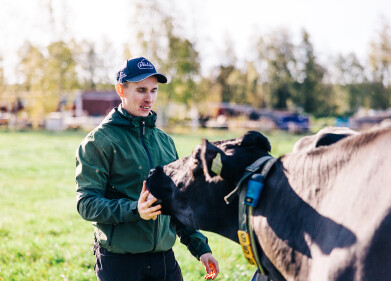Air Clean Up
How clean is your local air?
Apr 23 2019
Few people know how clean the air is where they live, work, exercise or where their children go to school. Although air quality can be shown to vary significantly over short distances, air pollution is generally measured using a small number of large, expensive and high quality monitoring stations. The equipment used in these stations is very accurate and complies with measurement standards but they are expensive to buy and maintain, as well as difficult to position because of their size and infrastructure requirements.
With most cities having a single figure number of reference stations at best, many neighbourhoods do not have access to regular and localised air quality information. Historically, the best solution currently is to fill the gaps through modelling, which combines available air quality readings with other information such as emissions inventory.
Demand from communities for better local air quality information is coming at a time when development of smaller, cheaper air quality sensors can provide a solution to the challenge. ‘Small sensor’ air quality systems can provide highly localised pollution measurements, including nitrogen dioxide (NO2) and the key particulate matter measurement, PM2.5, but to provide meaningful measurements on which communities and authorities can make decisions, the information must show traceability to reference measurements.
Many initiatives around the world are aiming to show what can be done, with one of the most ambitious being the Breathe London project in London. 100 small sensor systems are being used, in combination with data from London’s reference network, modelling and readings taken by Google cars modified to carry high quality air monitoring equipment. This project aims to demonstrate how such a ‘hyper-local’ network can be managed, creating a template which can be rolled out to other cities worldwide.
Similarly, 50 AQMesh small sensor air quality monitoring units have been installed to monitor air quality in each of the 50 zip codes in Minneapolis - Saint Paul, USA. “This project is about understanding small-scale differences in air pollution in urban areas in order to minimise exposure to harmful air pollutants, particularly for vulnerable communities. The Assessing Urban Air Quality project will use new air monitoring sensors to broaden our knowledge about air quality in Minneapolis and St. Paul”, commented Monika Vadali, Ph.D, who is leading the project.
AQMesh has also been used to monitor air quality around industrial sites and next to nearby communities which may be affected. As the monitoring units can be positioned with a high degree of flexibility, such as mounting on a lamp post, it is possible to capture data at exactly the point required. With measurements usually every 15 minutes, combined with local wind speed and direction information, it is possible to build up a highly localised picture of likely pollution exposure and identification of pollution sources.
Whilst regulatory authorities are currently defining testing methodologies to help users choose small sensor air quality systems, the best small sensor systems provide a useful and practical tool to supplement existing monitoring networks and are in active use around the world, providing new information about local air quality for a range of applications.
For more information about AQMesh and applications please click here.
Events
Nov 26 2024 Paris, France
Nov 27 2024 Istanbul, Turkey
H2O Accadueo International Water Exhibition
Nov 27 2024 Bari, Italy
Biogas Convention & Trade Fair 2024
Nov 27 2024 Hanover, Germany
Dec 11 2024 Shanghai, China







-as-feedstock.jpg)






